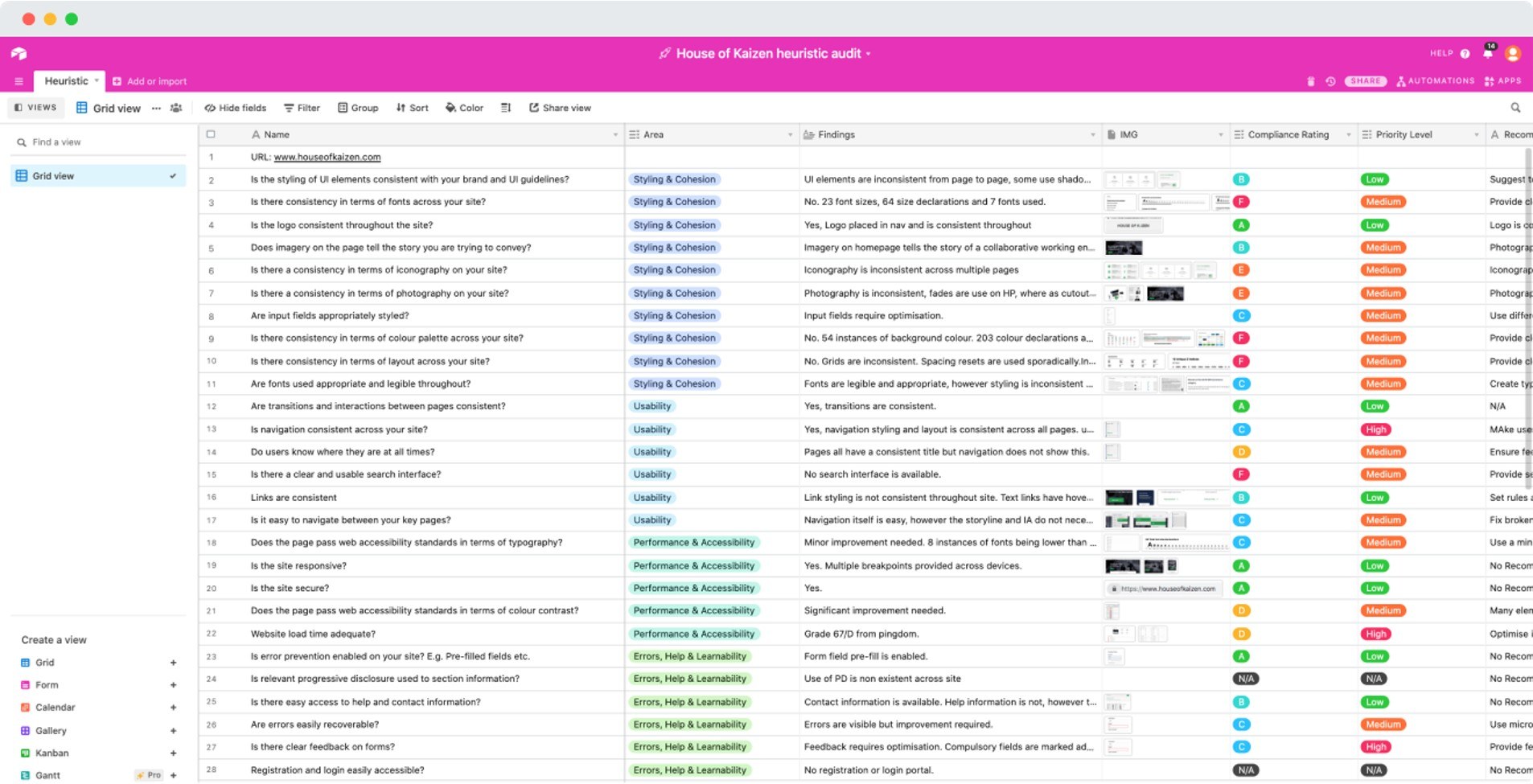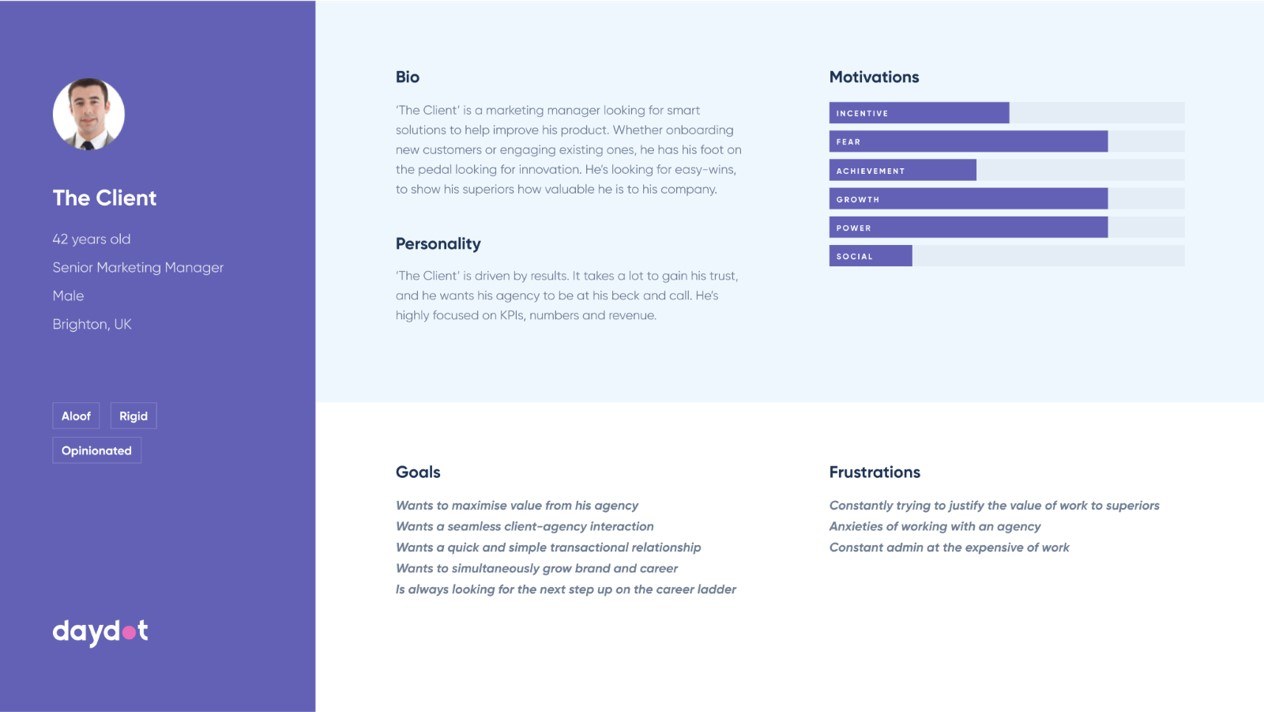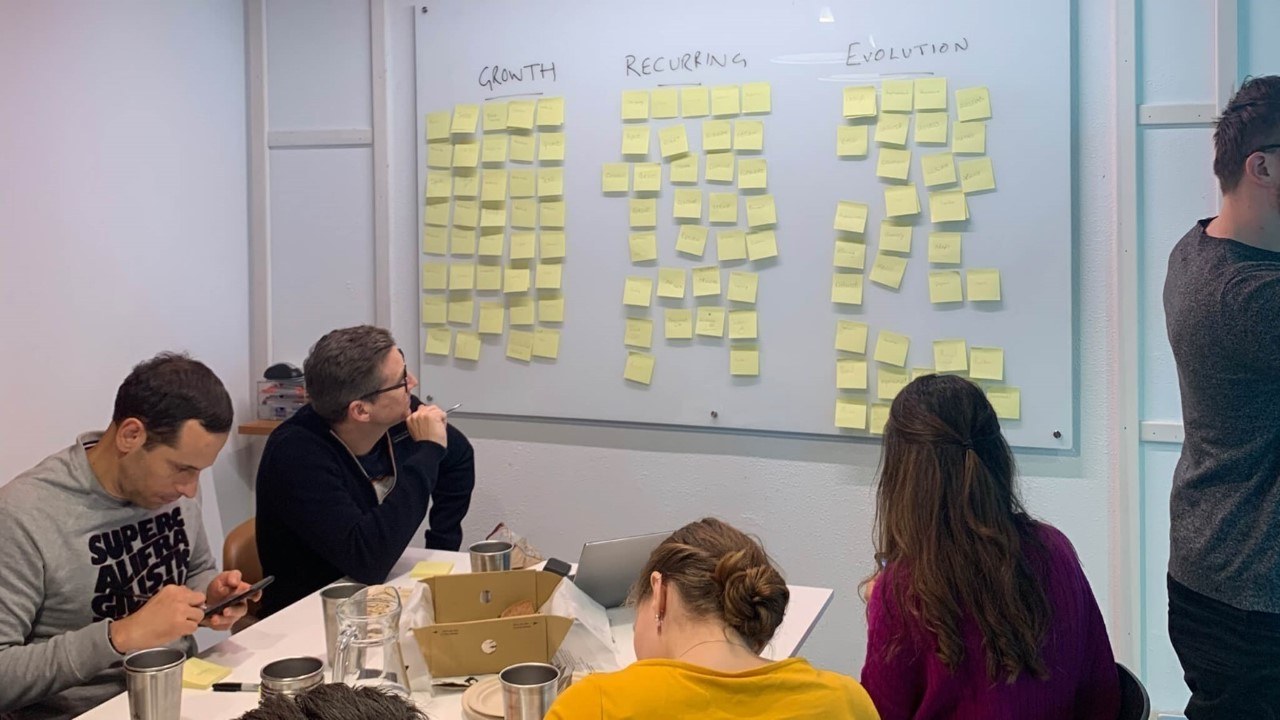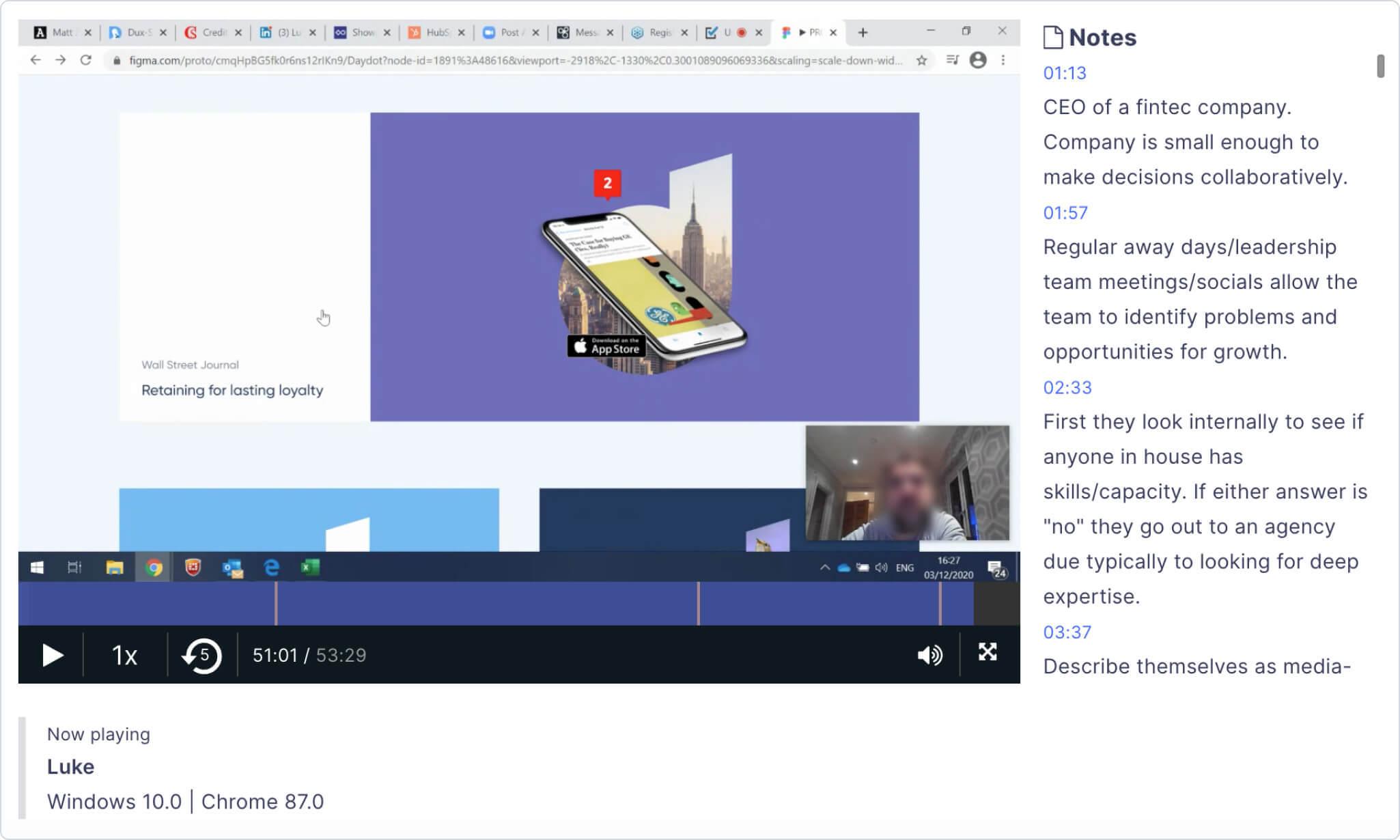The pandemic brought with it much change for us all in a variety of different ways. It’s changed the way we’ve worked, amongst many other things. It was also an enormous time of change at Daydot, with a complete realignment of our business, and with it, a complete revitalisation of the House of Kaizen UK brand. A small internal team spent time together refining the new vision, based on the defined strategic mission.
After 17 years’ heritage in the industry, the House of Kaizen brand had an excellent innings, solving clients’ issues through media, our CRO heritage and moving into CX, finally landing on where we wanted to be with our ethos of Digital Experience Optimisation (DxO). But the old brand was tired at this point and we had to ask ourselves the key question: did the brand truly reflect who we wanted to be as a business?
The brand, although certainly in need of a refresh, contained our important heritage and we were keen to keep hold of these elements to shape the new brand, building the foundations upon what we were known for, our expertise and heritage, to craft a new brand which further and more clearly expressed who we wanted to be.
- Unify communication: Identify our key audiences and create an easily maintainable and consistent set of guidelines for communication.
- Practice what we preach: Create a brand that reflects the work we do. To hone in on a proposition that drives more business.
- Simplify and systemise: Deliver a simple and scalable online experience that can act as a test bed for future improvements.
It’s important to us that we practice what we preach here at Daydot and we knew we needed an in-depth stage of discovery to set us up for the road to a rebrand, utilising the same expertise that we employ when working with our clients. But how do you remain objective with your own brand? How do you challenge stakeholders and yourself when the process can be so personal?
We followed our process in two different stages: gathering key stakeholder requirements and researching market requirements. We utilised a number of key techniques from our research repertoire at this phase.
- Stakeholder interviews: Gathering requirements from internal various stakeholders, as well as interviewing clients and prospects to gather their input, we started to shape our vision based on both our past heritage and our vision for the future.
- Define key deliverables: What would success look like? What would we require to build a living and breathing brand? Defining objectives and meeting (or exceeding them) is our bread and butter. It was no different for our new brand.
- Risk and legal analysis: What complexity does the new rebrand entail? What potential legal hurdles might we encounter and how could we address these early on in this process?
- Journey analysis: How could we complete a user journey analysis to better understanding our customers? How could we utilise this to inform our content strategy?
- Competitor analysis: How do we build a deep understanding of competitor agencies and how they position themselves? What can we learn from them? How do we discover which products, services, and trends inform our USP?
- Proposition research: Using the competitor and user journey analysis we started to shape and understand who we were as a business, who we wanted to be, and where we fit within the industry as a whole.
We often conduct a heuristic analysis for our clients and our own rebrand was no different. We analysed the House of Kaizen website, identifying gaps and opportunities. Our scoring system informed us which content to remove as well as helping us to understand which content was vital. It’s crucial to utilise this process to be as objective and streamlined as possible.

We also identified five user persona types (prospect, client, staff, freelancer, partner). We did this through a process of analytics, interviews and heuristics, mapping profiles around these user personas. Naturally we used these personas to inform the content strategy moving forward.

The next step on our journey was breaking down our personas into user stories to help empathise with the individual needs, desires, and pain points of our potential users. We then mapped the user journey across the customer lifecycle, from awareness through to loyalty, to complete a comprehensive picture.

At this point it was important to take a step back and analyse where we were before moving any further. Taking stock, we now had a solid business case, backed up with a compelling vision stemming from our stakeholders, and refined by the rebrand team.
Now the next step: define the strategic and creative direction of the whole brand through a series of ideation session.
As ever, we rapidly prototyped with a series of low-fidelity wireframes and content blocking, to understand the requirements, hierarchy and page linking on our proposed site. From this, we worked up our sitemap.

It’s crucial not to get tied to one idea at this stage so the Daydot ethos of experimentation came right to the forefront of our process. Across design languages we utilised guerrilla testing to truly understand which of our creative concepts had the highest impact, iteratively refining the approach.
We understand the value of challenging the process with different opinions so we ran a full-day creative workshop to refine our brand name. From a number of possibilities, all created to reflect and encompass different facets of the business, we voted against our favourite 5 and conducted trademark and availability research.

Phew. Our brand name was defined (finally). We had carefully balanced the various stakeholders' missions into a coherent vision for the new brand, building on our heritage, but also what we wanted the Daydot brand to embody. So our identity began to take shape and the hard work started....
Through our usual iterative process, we refined our identity and messaging, continuously testing these with our five personas at key stages of the process to ensure we remained on track and hadn’t strayed from the path. (The photo below shows an interview and note-taking on UserZoom.)

We checked in regularly with our wider internal team, pulling in wider disciplines from across the business. One example was getting developers prepared for a handover which would include creation of a pattern library and fully functional CMS. Or crafting messaging for the sales-team which reflected their day-to-day communication and would enable success. By reaching across the business like this, we made sure that our brand and collateral was useful, reflected the aims of the business, and was simply put, usable for each of the teams.
Exciting. Nerve-wracking. Energising. Exhausting. We had finally made it – the brand was a living and breathing beast before our very eyes. We launched the brand in Q3 2020, handing over three key deliverables which embodied our core objectives and met our requirements set out from the start: a refined vision exemplified in our new proposition, supported by a set of consistent messaging and visual guidelines, with a brand new, simple yet scalable website experience.
- Brand guidelines: a compressive set of brand guidelines alongside support collateral for marketing. We were extremely proud of how these guidelines had grown from our brand as we moved through the process but also how these could be added to and expanded as the brand evolves in the future.
- Website: our new website launched in April. We’re super excited by the visual expression of our new brand. The website includes a CMS back-end, accessible to the marketing team, allowing for easy maintenance and creation of ongoing content, whether we want to publish articles like this, or post our event roundups after our events.
- Design system: our modular approach to design was continued through to the development of our website with a design system and pattern library. And of course the work never stops – we plan to iterate this through testing moving forward!

You’ve come on the journey with us and discovered how the germ of an idea, grows into something more than the sum of its parts. We’re incredibly proud of what we achieved. Although the rebrand is still a work in progress (and our commitment to experimentation means we’re never finished really) we’ve received great feedback from our internal team and those in the industry (including our five persona types!)
It’s fantastic that even through a time of disconnection in the working world, our team is more connected and aligned than ever before. It’s a joy to see our new company values guide the way that we approach our work each day. The project inspired confidence in the design and marketing team, ushering in a brand new era here at Daydot.
If you have any thoughts on our new rebrand, we’d love to hear them!
Senior Designer, Daydot